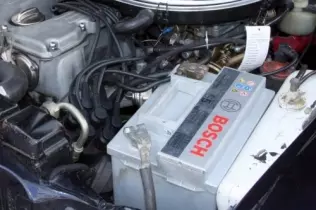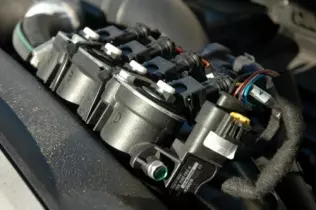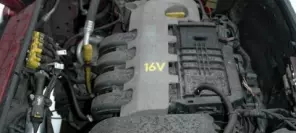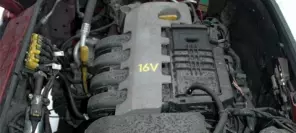- Main page
- Search
- Up to date
- Products
- Technology
- Vehicles
- Video
- Conversion Payback Simulator
Port Injection - Conversion Payback Simulator
Direct Injection - Conversion Payback Simulator
Diesel - Newsletter
LPG cars in winter - low temperatures
 loading results...
loading results... © JanmorThe battery, on which the engine’s start-up depends, is the element of the car’s electrical system most sensitive to low temperatures
© JanmorThe battery, on which the engine’s start-up depends, is the element of the car’s electrical system most sensitive to low temperaturesElectrical installation
Electric capacity of the starting battery goes down proportionally to the decrease in air temperature. This lowers voltage during start-up which may result in problems with starting the engine, especially if the drive unit is cold. Many additional devices used in winter (rear windowpane heating, wipers, air conditioning) put additional load on the electrical system and the battery in autumn and winter. Larger load on installation and additional voltage drop resulting from the use of those devices in combination with limited battery capacity (it draws more power during the start-up due to thickened engine oil) mean that the electrical system in winter works in extreme conditions. That’s why it needs to be fully operational and the battery must be fully charged. Even the slightest damage to the electrical system will put more load on it.
Users of cars with low daily mileage over the course of a year may not even know that the battery is not fully charged. As long as the temperature is above zero or not much below zero, the battery will work properly. But its efficiency will be verified when more severe cold strikes. Starting the engine may become problematic or even impossible.
Therefore, before it gets really cold, it’s good to make sure the electrical system is fully operational and the battery fully charged.
Petrol supply system
The level of petrol in the tank should allow lubrication and cooling of the fuel pump, and cold starting. It’s crucial because in modern gas supply systems, start-up is carried out only using petrol.
A low level of petrol in winter may result in water condensation on the inner walls of the tank. Water that leaks to gasoline can cause difficulty in starting the engine and irregularities in its work. This occurs typically in cars with older installations (1st and 2nd generation, without temperature sensor in the regulator), in which the use of petrol during start-up is up to the driver. Overly thrifty users, who limit fuel consumption by shortening the time the engine runs on petrol or even by starting up the engine on gas, may be exposed to some trouble that comes directly with such action. Gas systems of later generations force drivers to use petrol in the initial period after start-up, eliminating the abovementioned problem.
In winter, you should also take into account that fuel consumption is higher, as the engine works longer on start-up fuel and it takes a longer while for it to reach the temperature, at which it is possible to switch to LPG.
 © gazeo.comOf all elements of the autogas system, injectors are most sensitive to contaminants. Regular filter replacement (both liquid and vapour state filters) will protect the common rail against contamination
© gazeo.comOf all elements of the autogas system, injectors are most sensitive to contaminants. Regular filter replacement (both liquid and vapour state filters) will protect the common rail against contaminationGas system
Low temperatures also adversely affect autogas systems. Oily contaminants accumulating in various elements of the installation that LPG flows through in the gaseous state at low temperatures, thicken. It’s most problematic when these contaminants accumulate in the common rail (4th generation) and the regulator-evaporator (1st to 4th generation). The contaminants that change their state of aggregation (thickening) “stick” to all elements that have any contact with them. It may cause the regulators (increased membranes friction) and injectors (limited piston movement) to malfunction.
Unfavorable conditions that occur in winter cause accumulation of potential problems in a car. Reduced battery voltage hindering start-up, water in fuel, thick oil in the engine and the power transmission system, as well as problems with ignition system resulting from increased humidity, may in extreme situations make starting the engine impossible. Therefore, it’s better to think about taking care of technical condition of the drive unit and gas installation before winter comes, because when it does finally come, any negligence will emerge with a vengeance.






